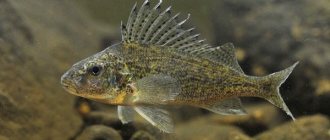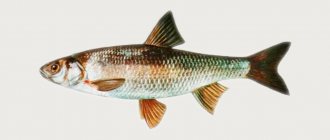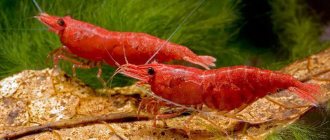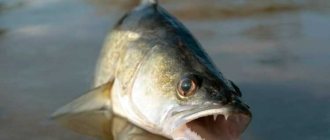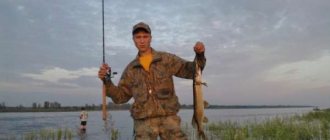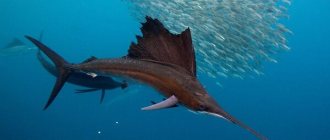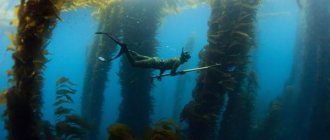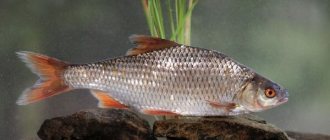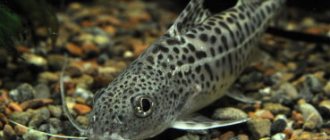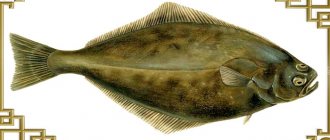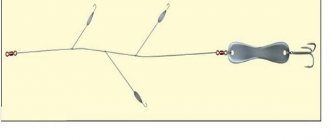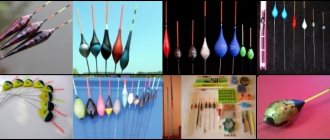One of the most important and valuable objects of amateur or industrial fishing is considered to be herring fish - one of the varieties of the huge herring family. The more popular and common name of the fish is the Baltic herring, which is associated with the habitat of the crumb, because most often it can be found in the Baltic Sea, both in salt waters and in desalinated sea areas.
Description of herring, habitat
Herring is a fairly small fish; it is quite difficult to find an individual whose length exceeds 20 cm. Only the truly lucky ones in fishing were able to catch representatives of the family, whose body length reached almost 40 cm, but such giants are very rare. The baby also cannot boast of weight - it is only 60-80 grams.
What does the fish look like? Belonging to the herring family, the baby has a corresponding color - silvery sides and a dark back shimmering with a green or blue tint. The body is long, strongly flattened laterally. A remarkable feature of herring is that its scales come off very easily, and often small fish that are brought ashore no longer need to be cleaned.
The fish lives in the Baltic Sea, but is also found in fresh water bodies of Sweden, even in the Kaliningrad Bay. Herring is a migratory fish, because during its life the Baltic herring travels several times from the depths of the sea to the shore and back.
Caught fish is a valuable catch, because at home you can prepare not only nutritious and tasty dishes from it, but also put it in jars. Canned fish made from fish with the addition of tomato sauce or vegetable oil will not leave any fish gourmet indifferent.
To the herring! She is caught in Riga's Ust-Dvinsk and Mangalsala
It’s a long way from the center of Riga to the treasured place. Some travel in cars, leaving them at the entrance to the dam (driving further is prohibited), others travel by buses, minibuses, and bicycles. The journalist leaves Vecmilgravis on bus number 24. I’ve caught perch and goby on the dam more than once, and this is the fifth year I’ve been fishing for herring.
Our current subscriber, an avid fisherman, showed me how to catch this fish several years ago. He invited me to Bolderaja to the pier. We each left with 5-liter buckets of herring. Then your author independently began to travel to Mangalsala - closer to home.
Along the way we meet people returning from fishing. Satisfied: the bite is good. The herring is carried in whatever way: in backpacks, wheeled bags, plastic buckets. And here is an unusual picture: the catch was hung on... a rocker. Instead of buckets of water, there are plastic bags full of fish at both ends.
There are dozens of anglerfish on the pier. Breeze - oh-oh-oh! Anyone who is here for the first time and comes without warm suits will not last long: it is drafty through and through. This is the sea gate of Riga: on one side there is the Daugava, on the other there is the bay. It’s almost always windy, and if there’s still a wave, it’s like it’s overwhelming—you can’t get through without boots.
It is difficult to find a free place: the fishermen stand shoulder to shoulder. Someone is leaving near the lighthouse, I go there. Near the anglers there are not the usual fish tanks, but plastic buckets. This makes it easier and faster to put together your catch.
Herring is caught differently from other fish. A sinker is attached to the end of a spinning rod or fishing rod, and above that is a so-called system with five or ten multi-colored hooks on leashes. When fishing, all this is thrown into the water without bait - the herring rushes after multi-colored hooks.
I lay out the gear on the shore. Meanwhile, the neighbor takes three beautiful herrings off his fishing rod at once. Long, fat, this is not store-bought small fry.
“Now is the time for large herring,” he says. – Although the day is not the same. Sometimes empty, sometimes thick. There was nothing on Friday: the herring moved away due to strong winds. And before that he carried away 12 kilograms. Treated neighbors and acquaintances. And the family enjoyed it too...
Anyone who believes that herring does not have any special taste is wrong. Just not the herring that is sold in stores. When a couple of years ago I brought her for the first time, freshly caught on a fishing rod, the cat, who had previously turned his nose up at this fish, loved it for its sweet soul. And then he asked for more for a long time. Friends who respect salmon and lamprey admitted that the pickled herring that we treated them to was a delicacy. And what a delicious thing - fried herring and cutlets made from it!
Another of our readers is an experienced fisherman who catches plump pike and pike-perch from a boat, and when the herring comes in, he goes to the pier: he values this small fish so much.
...After two hours of fishing, I had filled half of a 5-liter plastic bucket - I had fulfilled my quota. It's time and honor to give way to others.
The herring bite will continue for several more weeks. Only once a year, in the spring, does it come close to the shore - to spawn, and then you can catch it with a fishing rod. You can never guess the exact spawning dates. Two years ago it was the first ten days of May, in the past it was the third ten days of April. And when the fish move away from the shore, everything will return to normal: fishing will again become possible only for fishermen - from boats and trawlers...
How long does herring live?
What are the characteristics of this fish? How long does it live, what does it eat?
Herring is a subspecies of fish of the herring family. This is the Baltic form of the Atlantic herring. Inhabits the Baltic Sea east of the Denmark Strait, lives in water of low salinity, and is sometimes found in the fresh water of some lakes in Sweden.
The average length of the fish is up to 20 cm (rarely up to 37 cm - giant herring), weight - up to 75 g. Herring lives 6-7 years. It lives in the water column and feeds on zooplankton, mainly small crustaceans, but does not refuse fish larvae or fry.
Its taste is appreciated not only in our country, but also in Europe. In Holland, an annual festival is held in honor of this small fish, the main dish of which, naturally, is herring. It is also the national dish of the Swedes and Finns...
Useful properties of herring
Herring contains up to 23% fat and about 28% protein, it is an excellent source of vitamins A, D, B12, it contains macro- and microelements such as calcium, magnesium, sodium, potassium, iron, iodine... The composition of herring proteins includes essential amino acids, as well as Omega-3.
Tench, crucian carp, vimba...
Other fish are being caught well now. Svetlana Livmane caught this beautiful vimba on Lielupe (see photo). For her, this is not just luck - the first vimba in her life. Congratulations and wish you new catches!
The crucian carp is becoming more and more active. They catch him near Riga - in Vecdaugava. Not a trifle, but beautiful specimens.
The one who knows how to catch tench returns with it. The specialists who brought the enviable tench from Lielupe said that it takes the creeper and ignores the underleaf worm. But not only bait is important here, but also good bait.
The official opening of the pike fishing season is May 1, but in some places it is allowed to catch it in April - at Mikhail's ponds in Upesciems, at Vecumnieki ponds. The toothy ones were already brought from there. And most of the spinning players opened the season on May 1st. In addition, the fishing season from boats has also opened. No tail, no scales, pikemen!
Pike on the Gauja?
A reader asks:
“I want to know what is the best way to catch pike on the Gauja in the Sigulda-Cēsis area? I'm going there by boat in early May. Before that, I returned empty for two years - I fished with a spinning rod on a spoon..."
Word from expert Normunds Grabovskis:
— In May, it’s difficult to count on pike in this area: lamprey spawns, and the pike has plenty of tasty food. There are more chances to catch perch and chub, which are caught with small spinners or wobblers...
Ilya DIMENSTEIN.
fishermen joke
- Darling, did you buy me a present for my birthday?
- Of course, dear.
- Will I like him?
– If you don’t like it, give it to me, I’ve been dreaming about such a spinning rod for a long time...
Diet of the tiny fish, the effect of seasons on the behavior of the little fish
The baby's diet is not particularly varied; it feeds on organisms that live in water. Baby's main menu:
- plankton;
- copepods;
- small fish;
- larvae
- Cladocera crustaceans.
Larger members of the family do not hesitate to eat even their young brothers; they often feed on sticklebacks, not paying attention to the thorns.
Interesting! Salaka subtly senses the change of seasons, which is reflected in her behavior. In the spring, schools of fish head to the coastal shallows, and in the summer they go to the depths of the sea, where it is cooler. In autumn they rise to the surface again and go into shallow water. With the onset of winter, even river fish prefer comfortable deep waters, where they live until the spring warms up.
Reproduction of herring - interesting features
At the age of two or three years, the baby is ready to produce offspring. Depending on the timing of reproduction, the fish can be divided into two races - one spawns in the spring, the other just before the cold weather.
Regardless of race, spawning occurs the same way - at great depths, which often exceed 7-8 meters. The herring does not prepare a nest for laying eggs in advance - having broken up into pairs, the fish look for large stones. The recesses near the stones become a place for the spawn.
One female easily lays up to 10 thousand eggs, but not all of them grow into babies, because they become valuable prey immediately after hatching for their fellow tribesmen. Herring feeding on its offspring is far from uncommon. The main diet of the fry is plankton and soft algae. The babies try not to move away from their birthplaces, destroying all aquatic plants within a radius of several tens of meters within a few weeks.
Interesting! Babies that appear in the fall are usually much larger than those that appear after spring spawning. Regardless of the season, the fish are in no hurry to leave their native waters - only after they have grown a little, they group together, and the schools of young fish set off on their first sea voyage.
What gear do you need to stock up on to catch herring?
Due to its abundance, herring accounts for almost half of all fish caught in the Baltic Sea. On an industrial scale they catch it with nets, and special traps are often used. Nets are usually used along the path of movement of schools; this can be done from the shore or by water transport. Solo fishermen prefer simpler fishing methods, which will not bring as many catches, but will bring more pleasure from the process.
You can go fishing for herring all year round, but the peak of the catch occurs in the spring and autumn. Fishing for herring, thanks to the schooling of fish, turns into an interesting and productive activity, because you can easily catch a considerable amount of the tasty delicacy.
You can catch babies both from a boat and from the shore. When choosing gear for the valuable herring fish, it is better to give preference to a spinning rod. It is better to take a thick fishing line and attach several hooks to it.
Fishing has several features:
- You need to act extremely carefully - the fish easily breaks off.
- Do not make jerky movements; thanks to the soft mouth, the herring comes off the hooks.
- Has there been a bite? It is better not to pull out the fish right away, giving the opportunity to several more members of the family to peck on the remaining free hooks.
- Instead of nozzles, it is better to use multi-colored cambrics; you can make them yourself from wire insulation. The most attractive colors for herring are white, blue, and red.
- You can even use multi-colored hooks without bait - this is quite enough for a stupid fish.
You can also catch herring on a donk. You need to equip it with a sinker and several multi-colored hooks - you won’t need a float. When fishing, you need to lightly twitch the tackle, allowing the hooks to shake slightly - this will attract the attention of the fish. After the first bite, you can stop moving the fishing rod - the baby caught on the hook, which you don’t need to rush to fish out, will do the job perfectly without the help of a fisherman.
Since herring is considered a commercial fish, it is caught in huge quantities every year. Poachers manage to catch tons of valuable fish during the season, thereby significantly reducing the population. The conservation status of herring is low, which can lead to the fact that even the most fishing spots quickly become impoverished.
Salak is a wonderful fish with valuable habits. Catching a baby is a fascinating process, because with a little luck and skill you can return home with a large bucket of the coveted catch. Knowledge of the habits and characteristics of the fish is a prerequisite for successful fishing.
Source: fishelovka.com
Tackle for herring
